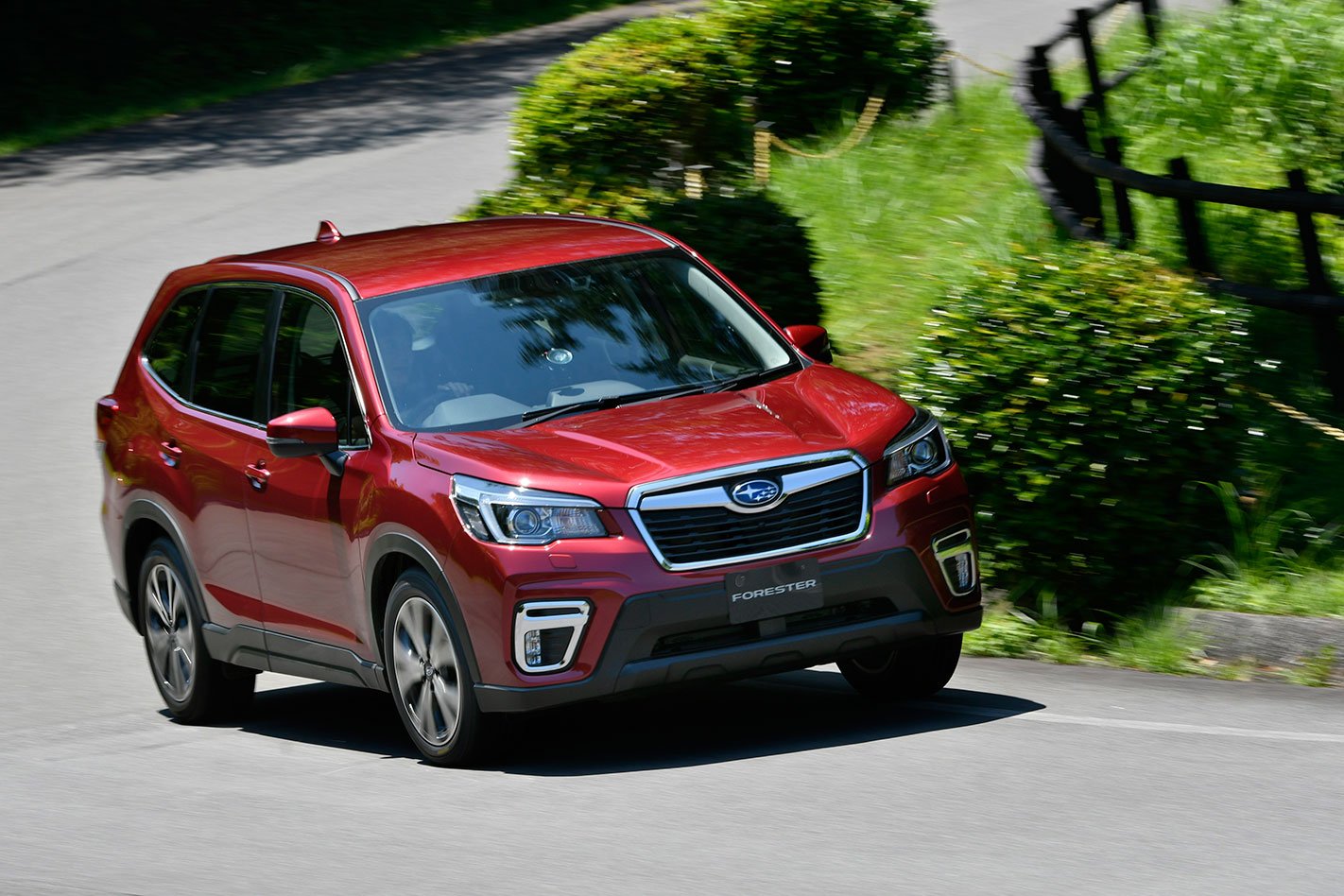WHAT IS IT?
This is an all-new version of Subaru’s most popular model globally. Forester was an originator of the mid-size SUV segment when it launched almost 20 years ago, and this overhauled fifth-gen model aims to maintain its distinctive points of difference in what is now a hugely popular category, while bringing chassis, engine and infotainment tech up to par with fresher competitors.
WHY WE’RE TESTING IT
The outgoing fourth-gen Forester has been a consistently competitive feature of Wheels mid-size SUV comparison tests, even in its advancing years, only falling off the pace noticeably in recent times. This all-new model – revealed at the New York motor show earlier in the year – should push the formula forward, and a preview drive on a test track in Japan is our first chance to find out whether the generational leap has maintained its best assets or squandered them.
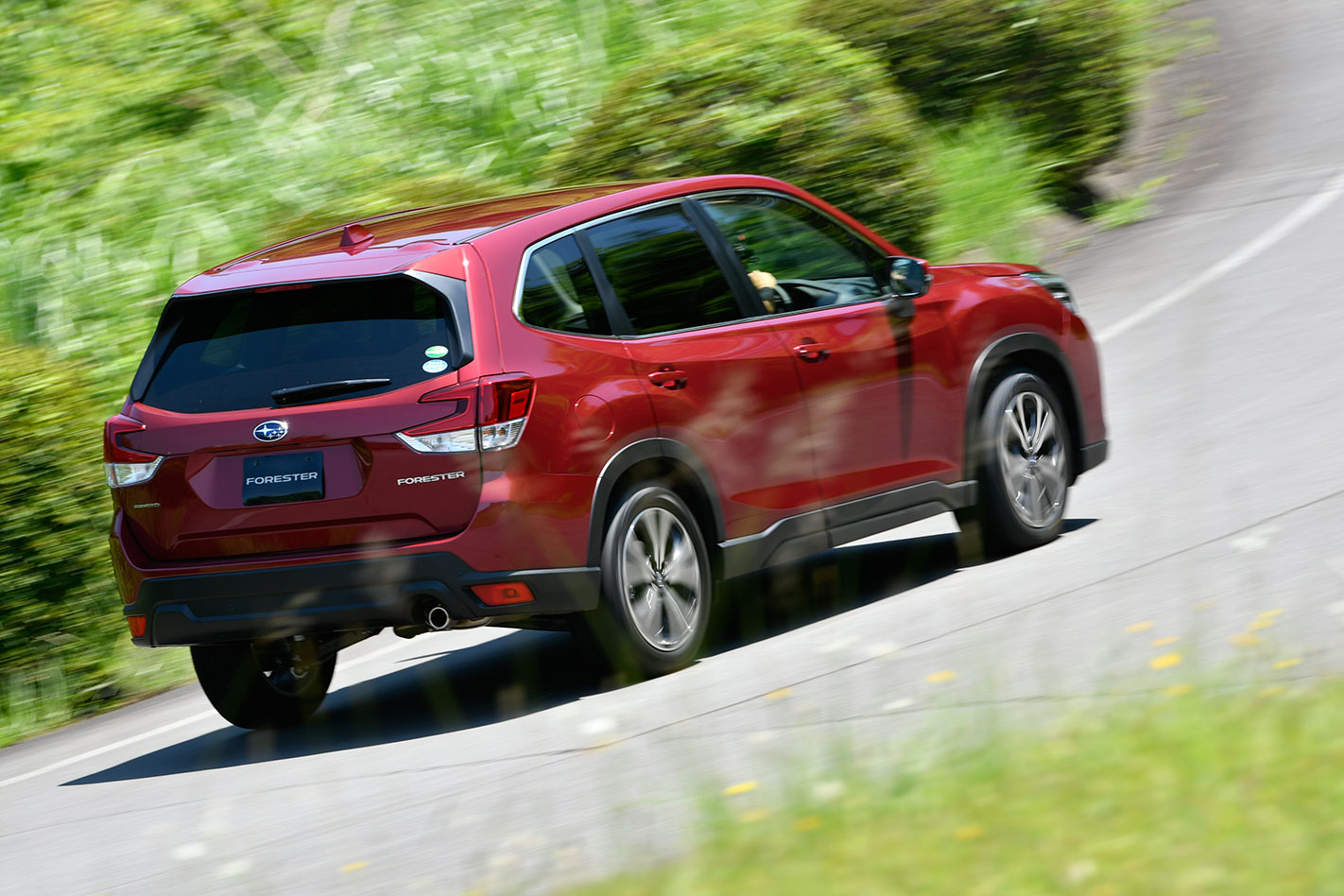
MAIN RIVALS
Mazda CX-5, Ford Escape, Volkswagen Tiguan, Kia Sportage, Hyundai Tucson, Toyota RAV4, Mitsubishi Outlander, Haval H6, Nissan X-Trail, Honda CR-V.
THE WHEELS VERDICT
Dozens of incremental improvements to a proven format make the new Forester more useful and thoughtful without offending Subaru’s loyal buyers. It may be all-new, but there’s a likeable familiarity about this Forester.
PLUS: Robust and attractive interior; practical consideration; big glass airiness and visibility MINUS: Transmission whine; no turbo, diesel or manual available
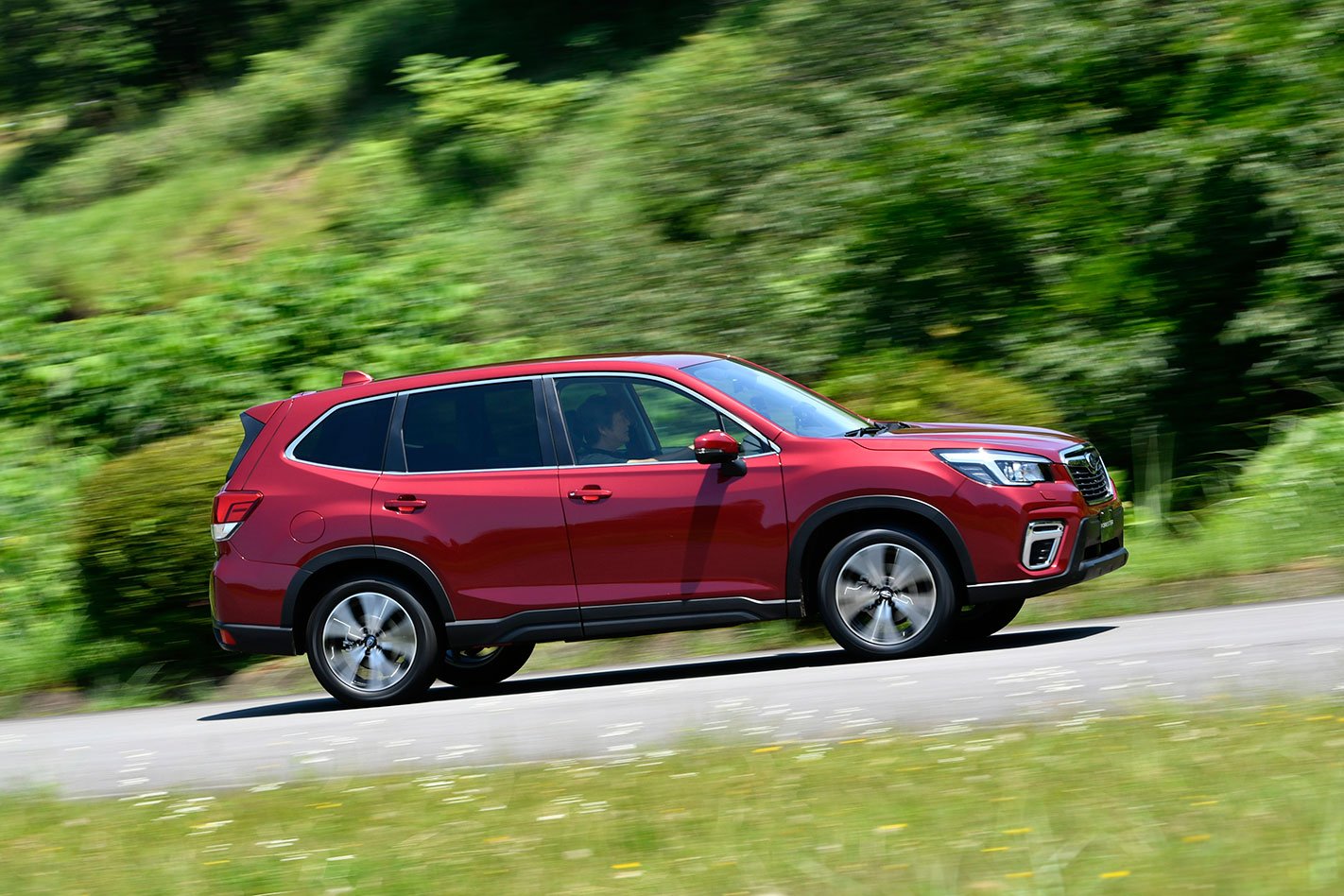
THE WHEELS REVIEW
NOTHING says ‘this car is a big deal for us’ like the 22 pages of technical drawings and graphs I have just been presented with at a Forester preview drive in Japan. This highly detailed breakdown and another six pages of press release information outline dozens of advances made by Subaru in the step from fourth- to fifth-gen Forester. There is a lot to digest here.
In Australia and around the world, no Subaru model sells better than the Forester. Legions of rusted-on buyers drive their beloved soft-roaders into the ground and then go back to Subaru for the new one. It’s the kind of loyalty most other brands only dream of.
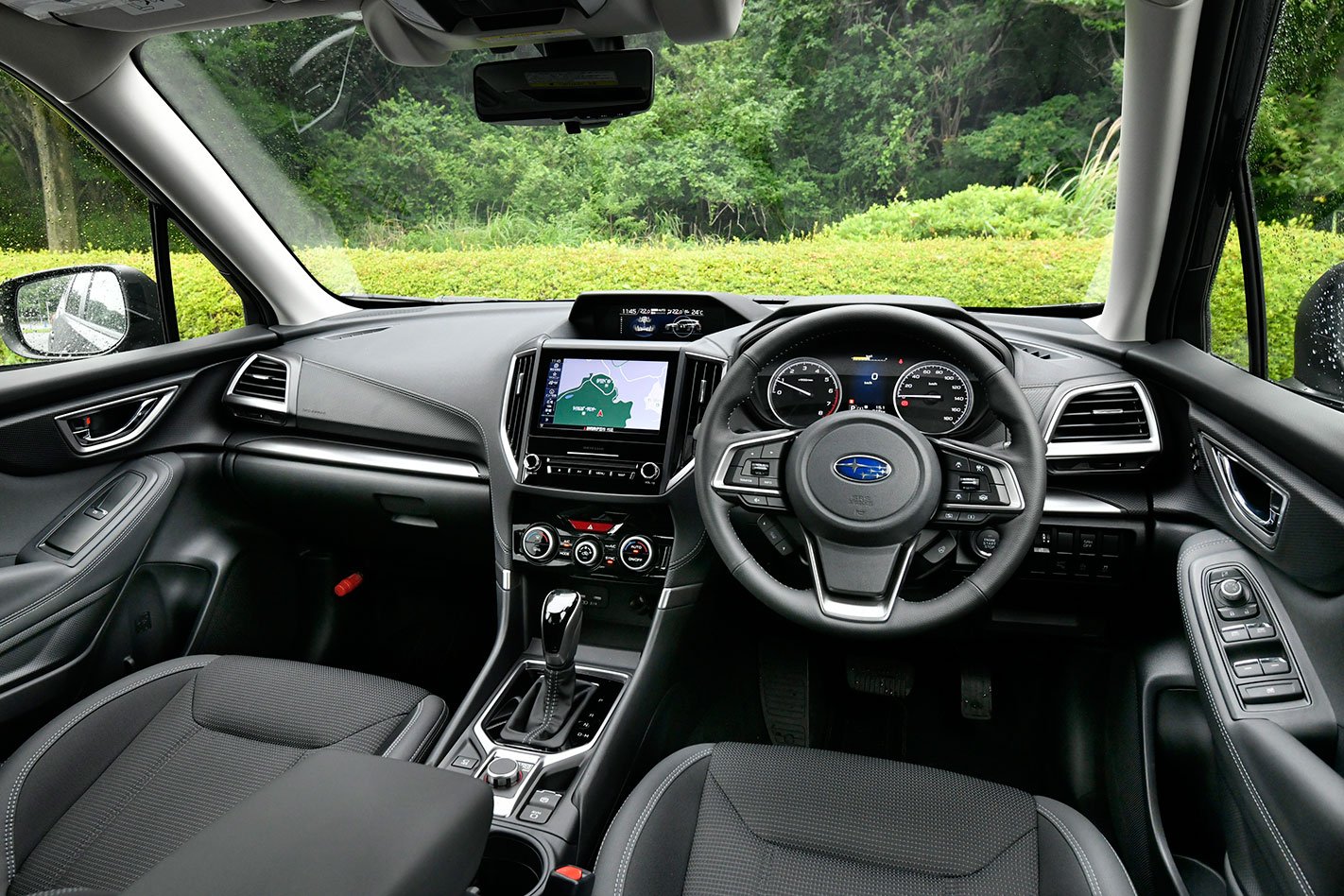
With that in mind, the way this all-new model looks and behaves makes a lot more sense. It may ride on a completely new platform and boast an almost entirely new engine, but it feels like a fine-tuning of Subaru’s successful formula rather than a transformation. Dozens of thoughtful, incremental improvements make it a better Forester, without losing its distinctiveness or alienating its many devotees.
And there’s nothing fundamentally wrong with that approach – just ask VW. The outgoing fourth-gen Forester has been held in high esteem here at Wheels. Its class-leading visibility – particularly from the second row – gave it a likeable point of difference compared to other claustrophobic mid-sizers, making it one of the best choices for families with kids.
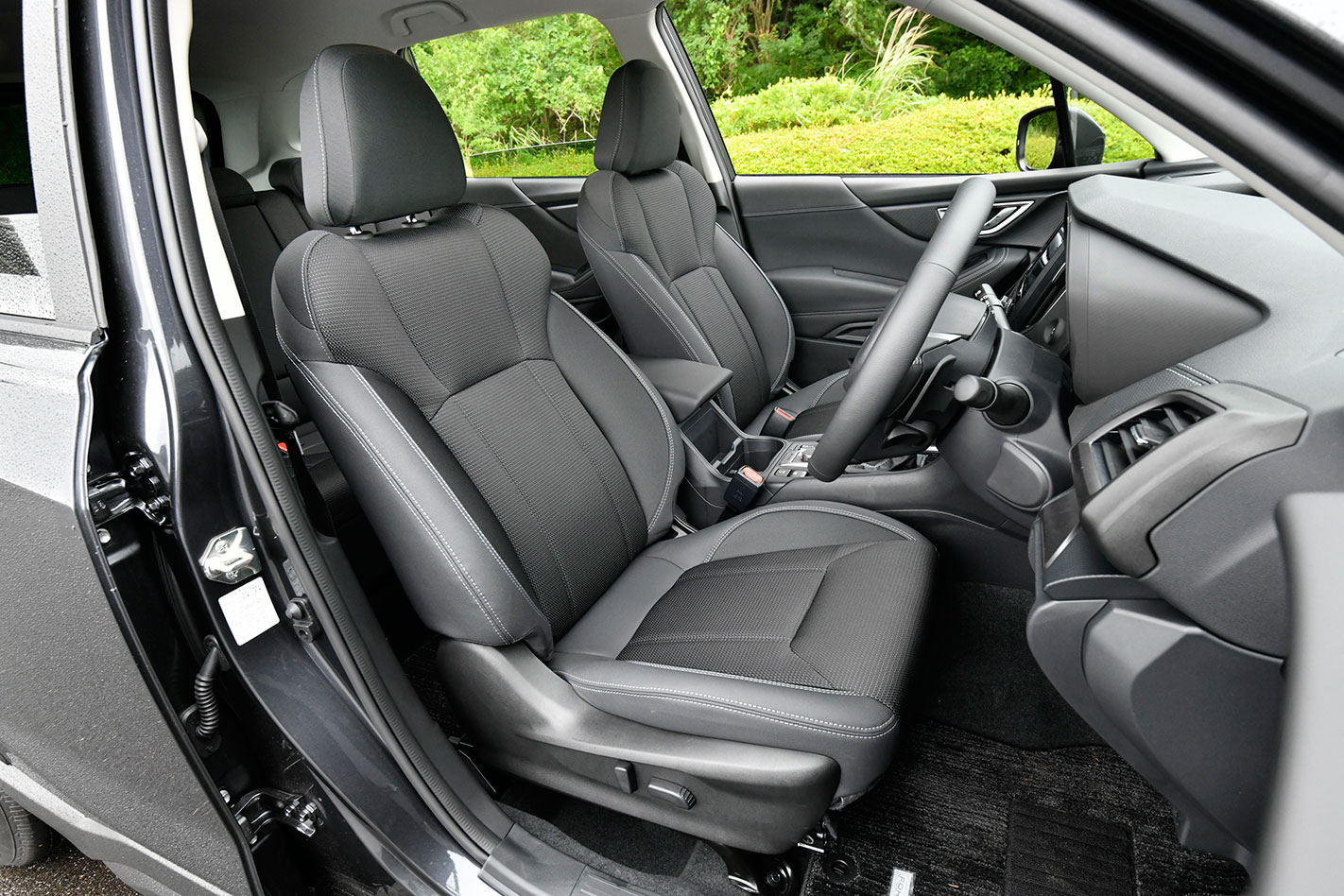
That high roofline and low beltline have been retained for the new model, with tall glass and narrow pillars to keep an airy feeling. Inside is where the biggest changes have occurred. Hard plastics have been minimised and touchpoints are now notably plusher. Textural new materials elevate its appearance while preserving a hard-wearing feel, and there’s more room inside to boot.
Forester now rides on a version of the Subaru Global Platform that already underpins Impreza and XV, with a 30mm longer wheelbase than before. Torsional rigidity rises by 40 percent, which should be good news for both crash safety and suspension performance. Overall dimensions of the body are slightly larger; 20mm wider, and 15mm longer, though the roof is 5mm lower. Weight increases by between 15 and 25kg, depending on spec, though some body panels are now aluminium to mitigate the growth.
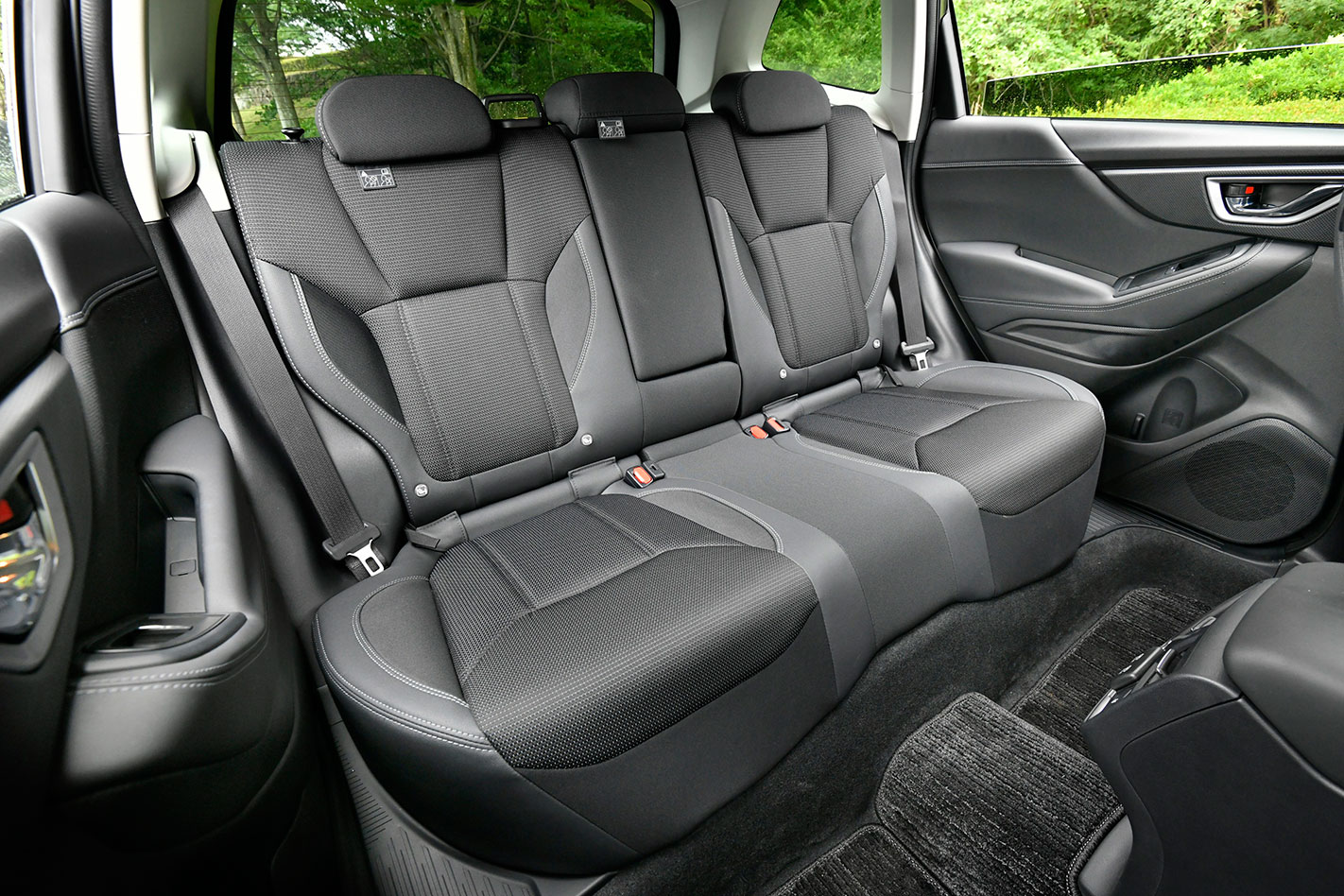
Enlarging the cabin has put an additional 20mm between the shoulders of front occupants and, though the old model wasn’t lacking, there’s 33mm more legroom in the back. Rear occupants also get three-zone map pockets for storing multiple devices, rear vents and a pair of 2.1amp USB charging ports.
A hefty rationalising of the Forester range means only a single, naturally aspirated petrol engine will be offered in Australia. No more XT turbo and no more diesel, though a mild hybrid version is expected to join late next year. Until then, the current Aussie line-up of seven variants will likely reduce to just three, all powered by a 2.5-litre flat-four that produces 136kW and 239Nm.
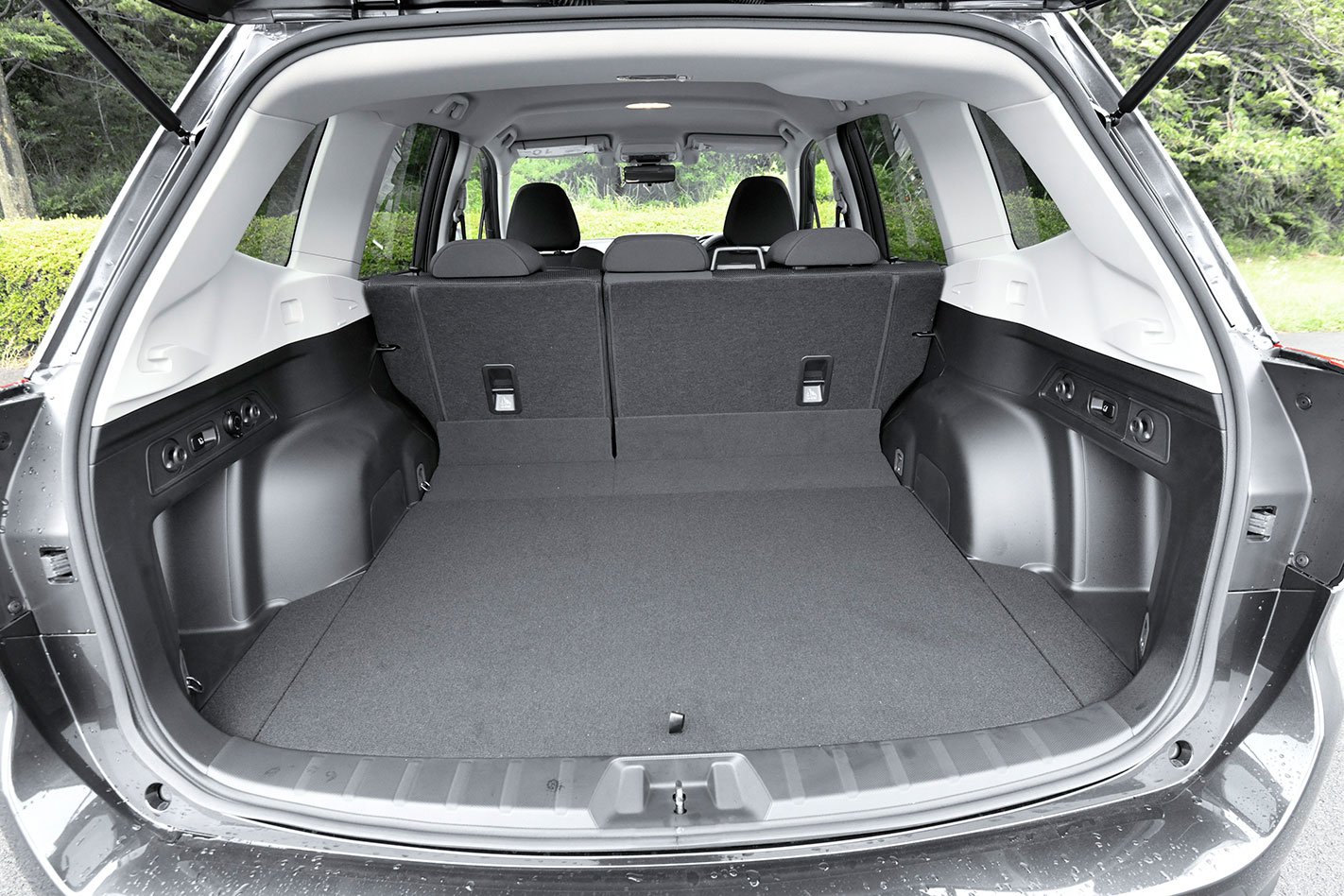
Those metrics are up 10kW and 4Nm over the old 2.5, but the boxer still needs revs to reach those numbers. Peak power doesn’t arrive until 5800rpm, while maximum torque sits at 4400rpm, and driving at those upper reaches brings out a lot of unwanted chain whine from the CVT, despite claimed improvements in that department. Subaru has widened the range of the CVT coupled to the new 2.5, effectively giving it seven ratios that can be selected with paddle shifters. It’s an adequate drivetrain for pottering about at low speeds, but there are bound to be those who will long for the torque of the old oiler and boosted XT.
Subaru says that 90 percent of the engine’s components have been revised to make the new 2.5-litre more efficient, which includes the introduction of direct injection. A Subaru-first thermo control valve was engineered for this engine to help it reach a thermally efficient operating temperature more quickly, and lots of other small changes should net a mild economy improvement overall. Relevant testing is yet to give us a comparative number for the old car’s 8.1L/100km claim.
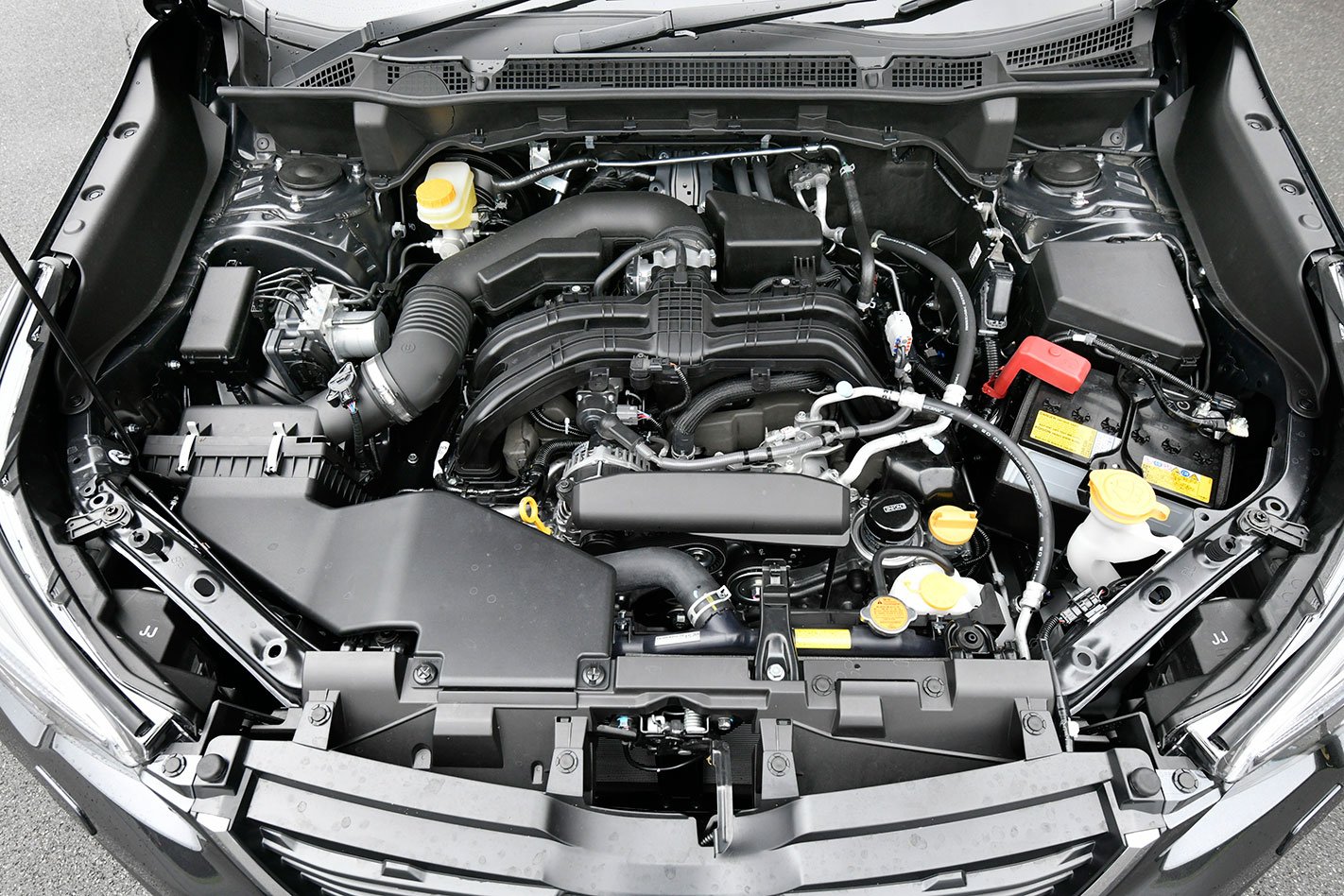
In terms of dynamics, a variable ratio steering rack has been introduced for better straight-line stability and more immediate off-centre response. Beyond a quarter turn of lock its weighting is heavy, and though variable racks aren’t always desirable, our limited testing opportunity suggests the new model hasn’t lost the old car’s dynamic competency. The Global Platform that performs well beneath Impreza is equally interactive here with reasonable front-end grip. Ride quality was harder to judge on the only surface available to drive on, which was snooker-table smooth, but Subaru’s claims of reduced body roll and vibration weren’t at odds with what we felt. Thankfully, a proper local test isn’t too far away.
Tangible improvements were easier to find in areas of practicality. The boot aperture has been widened to a generous 1300mm, and the electric tailgate mechanism has been sped up to address any frustration the slug-like actuation may have caused previously. There are bag hooks, a 12v socket and rear seatback releases in the wider and longer cargo area that now measures 520L, and still houses a full-size spare wheel.
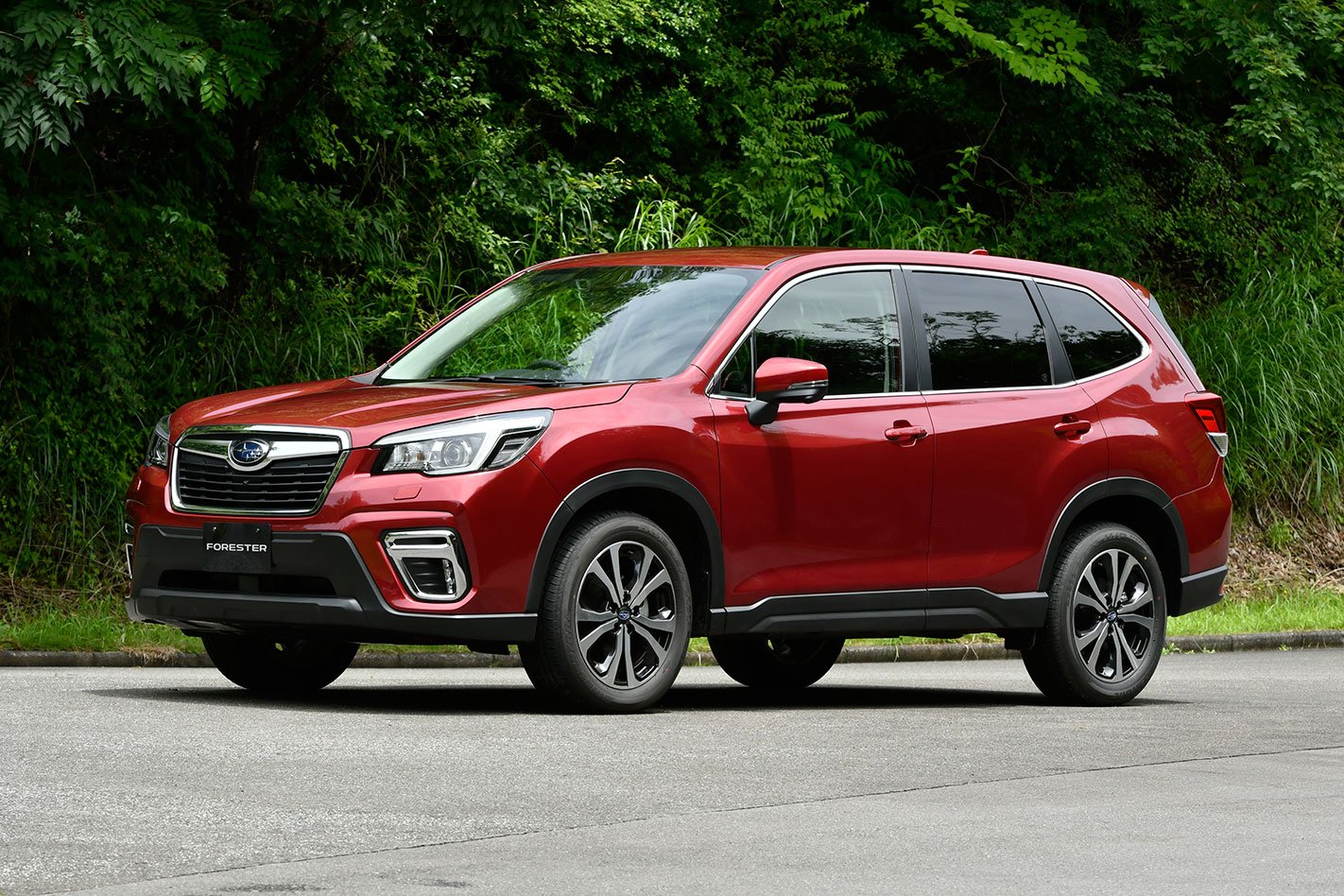
Changes to the rear doors allow them to open to almost 90 degrees, making it easier to step up onto the sill and gain access to the roof. A large section of anti-slip plastic for standing on has been added to the lower door opening here.
From the driver’s seat the chunky steering wheel is still busy to look at, though the myriad buttons will be second nature for serial Subaru purchasers. A main central screen is 8.0-inch in size, with built-in sat-nav and smartphone integration. A supplementary screen installed high on the centre console is now full colour, and shows climate control settings as well as vehicle info related to economy and off-roading.

A new mud and snow setting for Forester’s X-Mode system ups its respectable off-road ability, which includes hill descent control. Though Subaru is famous for its permanent, symmetrical all-wheel drive, X-Mode’s integrated control of the engine, transmission, centre diff and brakes, can vary the torque split up to 60:40. And with 220mm of ground clearance, Forester rivals most dual-cab utes.
Also new is Subaru’s Driver Monitoring System. A small camera, hidden in the dashboard, links to a program that can recognise the faces of up to five drivers and automatically adjust seat and mirror positions, climate control settings and preferred display configurations based on stored preferences. And it works impressively quickly when a new driver gets into the car. It can also watch for signs of drowsiness or distraction and alert the driver to attention.

Details around the specification of the local line-up will be confirmed ahead of the Forester’s September 1 on sale date, but expect Subaru’s EyeSight active safety systems to be standard across the range, including adaptive cruise control, blind spot monitoring, automated braking in forward and reverse, and adaptive headlights. A choice between 17- and 18-inch wheels is also expected for Australian variants, which will be fitted with seven airbags.
Forester has built a solid following based on its principles of safety, all-weather dependability, and thoughtful, practical packaging. Subaru hasn’t reinvented the genre the original model helped create, but this fifth-gen Forester delivers meaningful improvements to a vehicle that already has its niche carved out. For those faithful fans, that’s exactly what was needed.

SPECS
Model: 2019 Subaru Forester Engine: 2498cc, flat-four, dohc, 16v Max power: 136kW @ 5800rpm Max torque: 239kW @ 4400rpm Transmission: CVT Weight: 1590kg (est.) 0-100km/h: 9.9sec (est.) Fuel economy: 7.8L/100km (est.) Price: From $33,000 (est.) On sale: September
MORE: Subaru Forester Range Review MORE: Subaru Forester Specs, Range & Price

